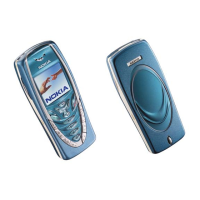Installing the Chassis
36
7210 SAS-D CHASSIS INSTALLATION GUIDE
3HE 10087 AAAA TQZZA Edition 01 Issue: 08
3.2.4 Grounding the Chassis
Warning:
• HIGH LEAKAGE CURRENT: EARTH CONNECTION ESSENTIAL BEFORE
CONNECTING SUPPLY.
COURANT DE FUITE ÉLÉVE: Raccordement à la terre indispensable avant le
raccordement au réseau.
• Chassis ground cables are not included. Use only power cords that have a grounding
(earthing) path. Use only power cords that have a grounding (earthing) path. Main
grounding (earthing) connection points are through the IEC60320 appliance inlets.
Grounding (earthing) points on the rear of the equipment are for equipotential bonding
only and are not the safety grounding (earthing) points for the equipment. Lack of proper
grounding (earthing) of the equipment may result in a safety hazard and excessive
electromagnetic emissions. See Table 11 on page 47 for descriptions of common
grounding-type (earthing) power supply cords.
If you ground the equipment by a method other than those provided in this manual,
those means should be in compliance with all local wiring regulations and practices
• To comply with the GR-1089-CORE, Issue 03, requirement R4-9 [31] standard for
electromagnetic compatibility and safety, all intra-building ports are specified for use
with shielded and grounded cables at both ends.
The intra-building port(s) of the equipment or sub-assembly is suitable for connection to
intrabuilding or unexposed wiring or cabling only. The intra-building port(s) of the
equipment or sub-assembly must not be metallically connected to interfaces that
connect to the Outside Plant (OSP) or its wiring. These interfaces are designed for use
as intra-building interfaces only (Type 2 or Type 4 ports as described in GR-1089-
CORE, Issue 4) and require isolation from the exposed OSP cabling. The addition of
primary protectors is not sufficient protection in order to connect these interfaces
metallically to OSP wiring.
• Bare conductors must be coated with an appropriate antioxidant compound before
crimp connections are made. All unplated connectors, braided strap, and bus bars must
be brought to a bright finish and then coated with an antioxidant before they are
connected.
• The equipment under test (EUT) is specified for DC-I power configurations. The battery
returns must remain isolated until they reach the main power bus.
• Only electrical service personnel should perform wiring and cabling to the system.
• All power to the equipment rack or cabinet should be disconnected before the
installation.
• Power cable(s) must meet the local electric code requirements.
• The power supply on/standby switch is not intended to be used as the chassis ON/OFF
switch. Unplug the power cord from the power source and disconnect the cord from the
receptacle on the power supply module to remove power.
• An external circuit breaker no greater than 15A must be located within a readily
accessible distance of the equipment. This is intended as the disconnect device.

